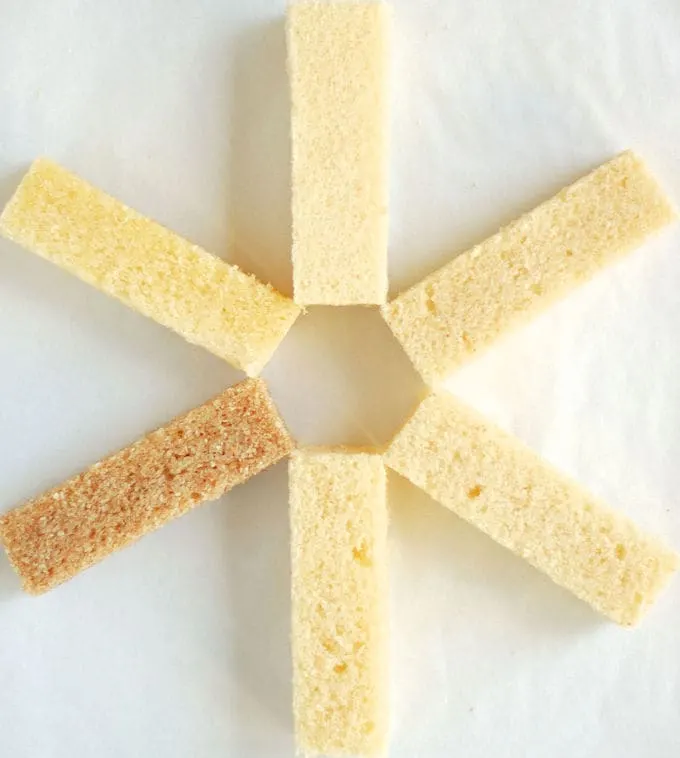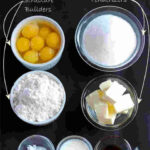🥣 How Flour Creates Cake Structure
Why the type of flour—and how you use it—determines your cake’s crumb.
Flour is the backbone of every cake recipe. While butter, sugar, and eggs provide flavor, richness, and moisture, flour supplies the framework that holds it all together. The key to a tender, moist cake lies in balancing structure-builders (flour and eggs) with tenderizers (sugar and fat).
In this lesson, we’ll look at how different types of flour affect that balance—and why choosing the right one makes all the difference.

⚖️ How Flour Builds Structure
Wheat flour is made up of proteins, starches, lipids, sugars, and enzymes. When combined with liquid and mechanical mixing, the proteins (primarily glutenin and gliadin) form gluten, the elastic network that traps air and supports the cake’s shape.
Meanwhile, starches gelatinize during baking, setting the structure and giving the crumb its body.
Because cakes need structure without toughness, we limit gluten development by:
- Using the reverse creaming method (fat coats the flour proteins before liquid is added).
- Keeping salt levels low, since salt strengthens gluten.
- Choosing low-protein flours (like cake flour) for tenderness.
For more detail on the composition of flour—starch, protein, and how they behave in different types of doughs—see my full guide on Flour as a Baking Ingredient.
🌾 Cake Flour and Why It Works
Cake flour is milled from soft wheat and has a low protein content—typically 7–9%. It’s often chlorinated, a process that slightly acidifies the flour and modifies its starches.
Chlorination does three important things:
- Weakens gluten for a softer texture.
- Allows starches to absorb more liquid.
- Improves fat dispersion in the batter.
The result? A cake with a fine, even crumb and moist, delicate texture.
🧁 Making Cake Flour Substitutes
If you don’t have cake flour on hand, you can make a quick substitute: Use ¾ cup all-purpose flour + 2 tablespoons cornstarch per cup of cake flour. This lowers the overall protein content, though it won’t exactly match the texture of chlorinated flour.
🍫 Replacing Some Flour with Cocoa
Cocoa powder contains both starch and protein, so it contributes structure just like flour. When developing a chocolate version of your recipe, replace some of flour with cocoa by weight, one-for-one. For example, if you add 2 oz cocoa, reduce the flour by 2 oz.
🧪 Testing Different Flours
To see the impact of protein content, I baked my base pound cake recipe using cake flour, ap flour and bread flour.
- Cake flour: Light, tender crumb with small, even air pockets.
- All-purpose flour: Slightly firmer crumb, a touch drier.
- Bread flour: Dense texture and chewy edges from excess gluten.
Higher-protein flours absorb more water, so they produce a tighter, drier crumb. For soft, moist cakes, lower-protein flours are ideal.
🌾 Gluten-Free Flour in Cake Baking
Even though we try to minimize gluten in tender cakes, we still rely on a small amount for structure. When using gluten-free blends, that structure must be replaced artificially.
The gluten-free flour I tested contained rice flour, potato starch, pea fiber, tapioca starch, and xanthan gum (which acts as a binder). Using the reverse creaming method, the gluten-free cake baked flatter, since it lacked gluten’s elasticity.
To compensate, I tried the creaming method instead, incorporating more air. That second test baked up higher and lighter, proving that mixing method matters just as much as flour choice.
Baking Sense Tip
For a soft, fine crumb, use low-protein cake flour and the reverse creaming method to limit gluten. If you’re baking gluten-free, switch to the creaming method to add air and volume.
🧩 Takeaway
Flour is the structural foundation of every cake. Choosing the right flour and understanding how its protein and starch behave lets you control texture and moisture with precision.
📚 Continue Learning
This lesson is part of my Cake Recipe Science series, where I explain how each ingredient and mixing method shapes a cake’s structure, flavor, and texture. Keep reading to understand how all the elements – flour, sugar, eggs, fat, and leavening – work together to create the perfect crumb.
← Previous: How Cake Recipes Work | Next: The Role of Fats in Cake Structure →

